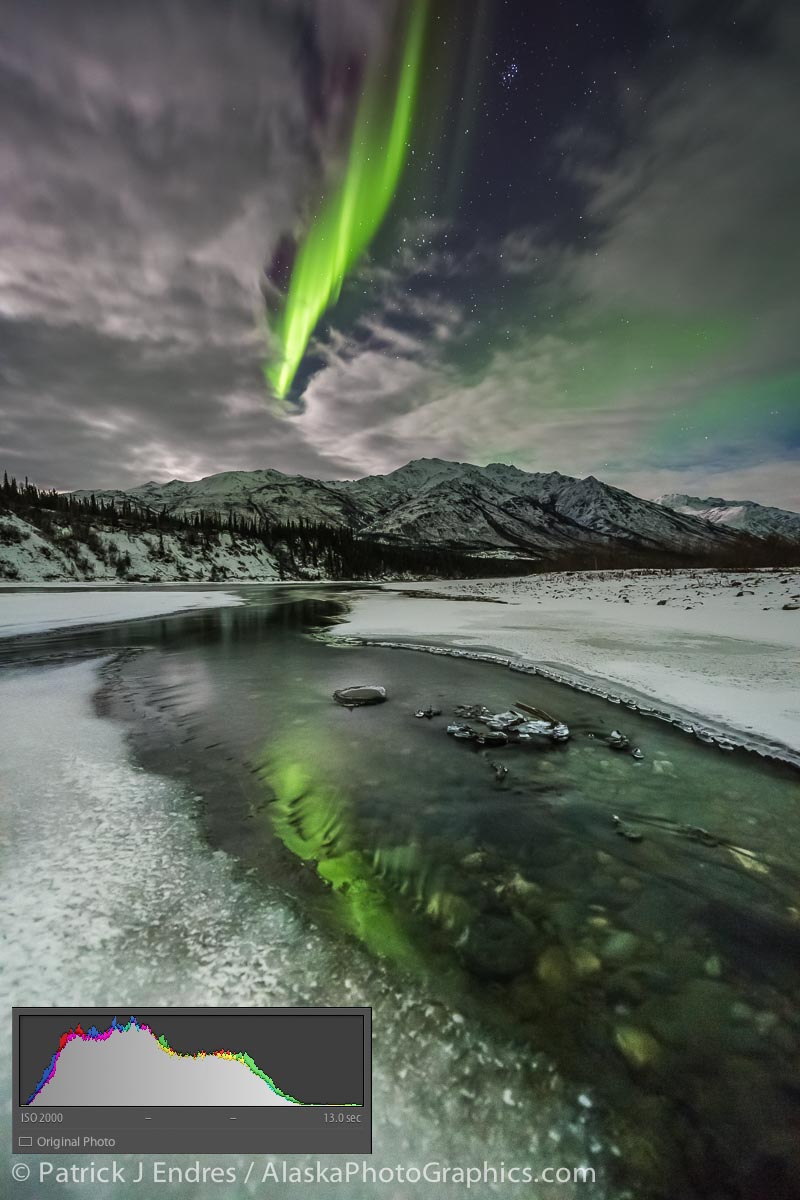
The aurora over the Brooks Range and the Koyukuk River, Alaska. Canon 5D Mark III, Nikon 14-24mm f/2.8, 13 sec @ f/2.8, ISO 2000. I included the post-development histogram for this photo that has been processed using Lightroom 5.
I recently returned from guiding two photo adventures in Alaska’s Arctic, seeking the northern lights, polar bears and all the other magic that the great north delivers. The trips were wonderful adventures, full of the drama that Alaska is known for, including weather, wind, snow and wild sights. I’ll have a gallery of images to show soon.
During these trips we dedicate some time to photographing the northern lights. One thing I always spend some time discussing is the use of a wide angle lens and composition. While this may be obvious in any treatment of landscape photography, it is a little more challenging on a dark night when a novice is focused on the aurora display in the sky, and not on what lays before them on the ground. A compelling foreground is what will bring any wide angle landscape to life. And since aurora photography almost always employs a wide angle lens, this should be a primary focus (I write and illustrate this point in my eBook on the subject). I like to approach a scene as though I am making a landscape photo that can stand on its own with the aurora’s presence. There are some limitations to this since the aurora does not magically appear exactly where you want it, but there are some general directions that one can follow.
In the photo above, I knew that the moonlight and the aurora would reflect in the foreground river so it prompted a low tripod position and a 14mm lens the help capture the linear shapes in the foreground. Fortunately for us on that mostly cloudy night, there was a cloudless patch in the sky where the northern lights appeared. The photo was taken at 2:39 A.M., and the lights were more active shortly before that but I was busy getting our guests lenses in critical focus (which can be no small task by the way, especially when using live view on a Nikon camera).
So if you have aurora photography on your bucket list, consider yourself a landscape photographer first and don’t get mesmerized by the show in the sky at the expense of an interesting foreground. Consider this:
- Survey the area and look for a foreground that is uncluttered
- If available, utilize a foreground surface that may reflect light in the sky
- Find a diagonal line to include in your foreground
- Get low if necessary
- Be aware of the direction of moonlight and use it to your advantage (front light is boring!)






